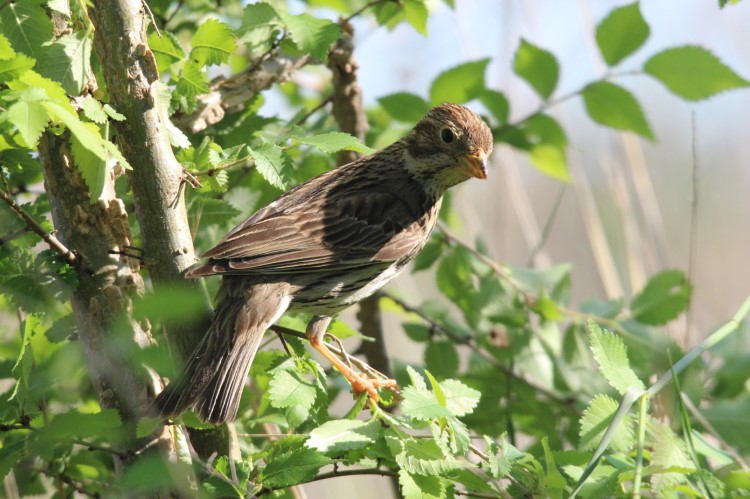How to provide for birds on grassland farms
Grassland bird species have different nesting and foraging habitats and many species require different habitats to nest and feed in. Maintaining a diversity of farmland habitats is therefore important. Lapwings, for example, nest in short open swards with good visibility to detect predators. When their chicks hatch they typically move them to adjacent invertebrate-rich grassland.
Wet grasslands provide good feeding grounds for a range of soil feeding birds including lapwings and other wading birds. Long dense vegetation, as found in fenced water margins, provides high abundances of insects and these habitats are preferred by birds that feed by plucking insects directly from the vegetation (e.g. yellowhammer).
Top tips to provide for birds on grassland farms:
- Maintain a diversity of sward structures to support a wide range of breeding birds and provide foraging habitats for different species.
- Protect ground nesting birds by avoiding mowing during the breeding season and reducing stocking densities in fields where birds are nesting.
- Provide semi-natural habitats such as woodlands, scrub, and grassland water margins to provide food, shelter and nesting sites for a range of species.
- Create species-rich grasslands and floristically diverse field margins to provide insects during the breeding season and seeds in autumn and winter.
- Maintain and restore hedgerows to provide shelter and nesting sites and cut in rotation every three years to provide berries in autumn/winter.
- Provide habitats rich in seeds and grain during winter, for example, weedy field margins, buffer strips, wild bird cover, and stubble. Where such habitats don’t exist you could consider supplementary feeding.

Resources
Case Study: Balancing the needs of cattle and corn buntings in Aberdeenshire
Technical Note (TN686) - Conservation Grazing for Semi-Natural Habitats
Technical Note (TN711) - Black Grouse Management on Farmland
Hedgelink: The complete hedge management guide for farmland birds
Sign up to the FAS newsletter
Receive updates on news, events and publications from Scotland’s Farm Advisory Service
